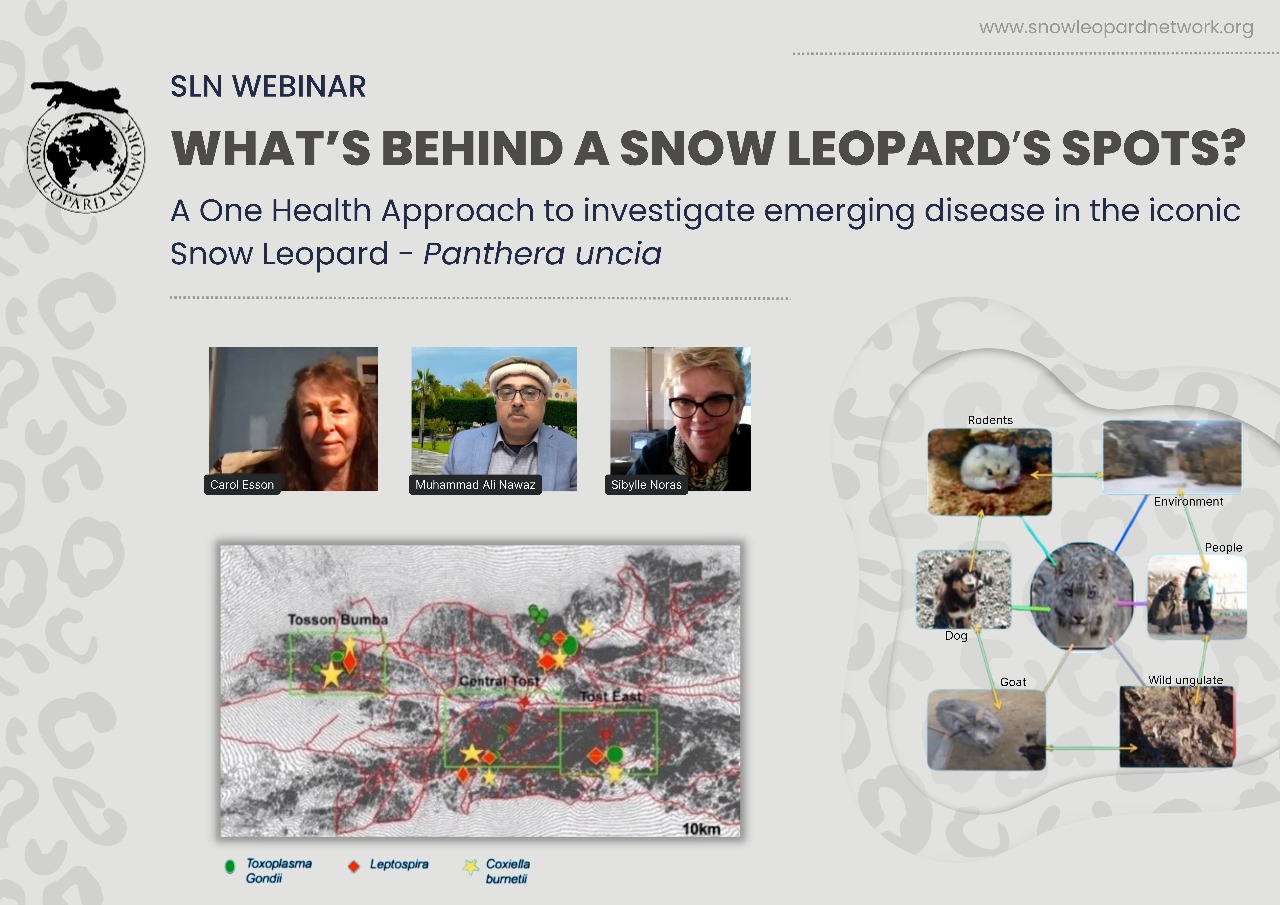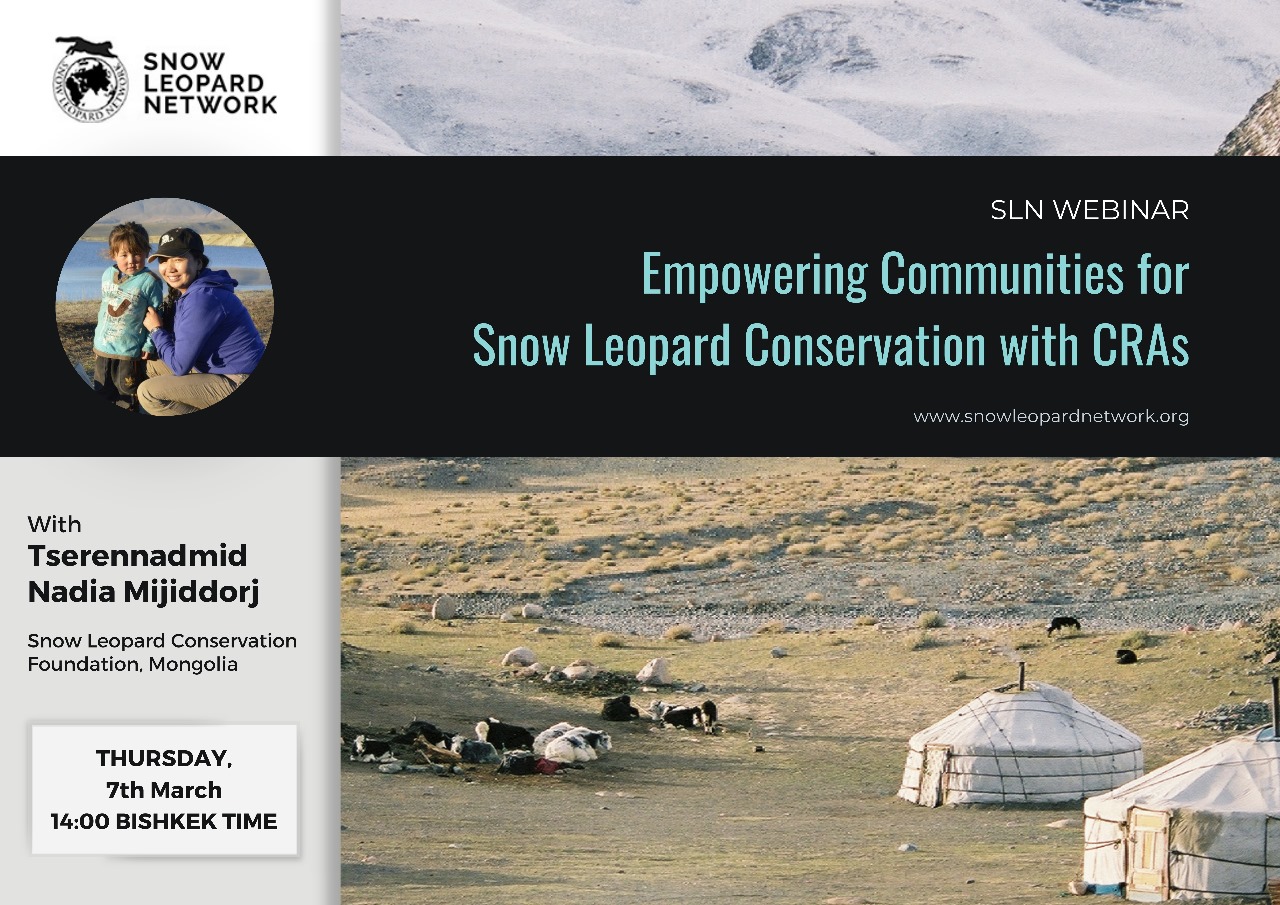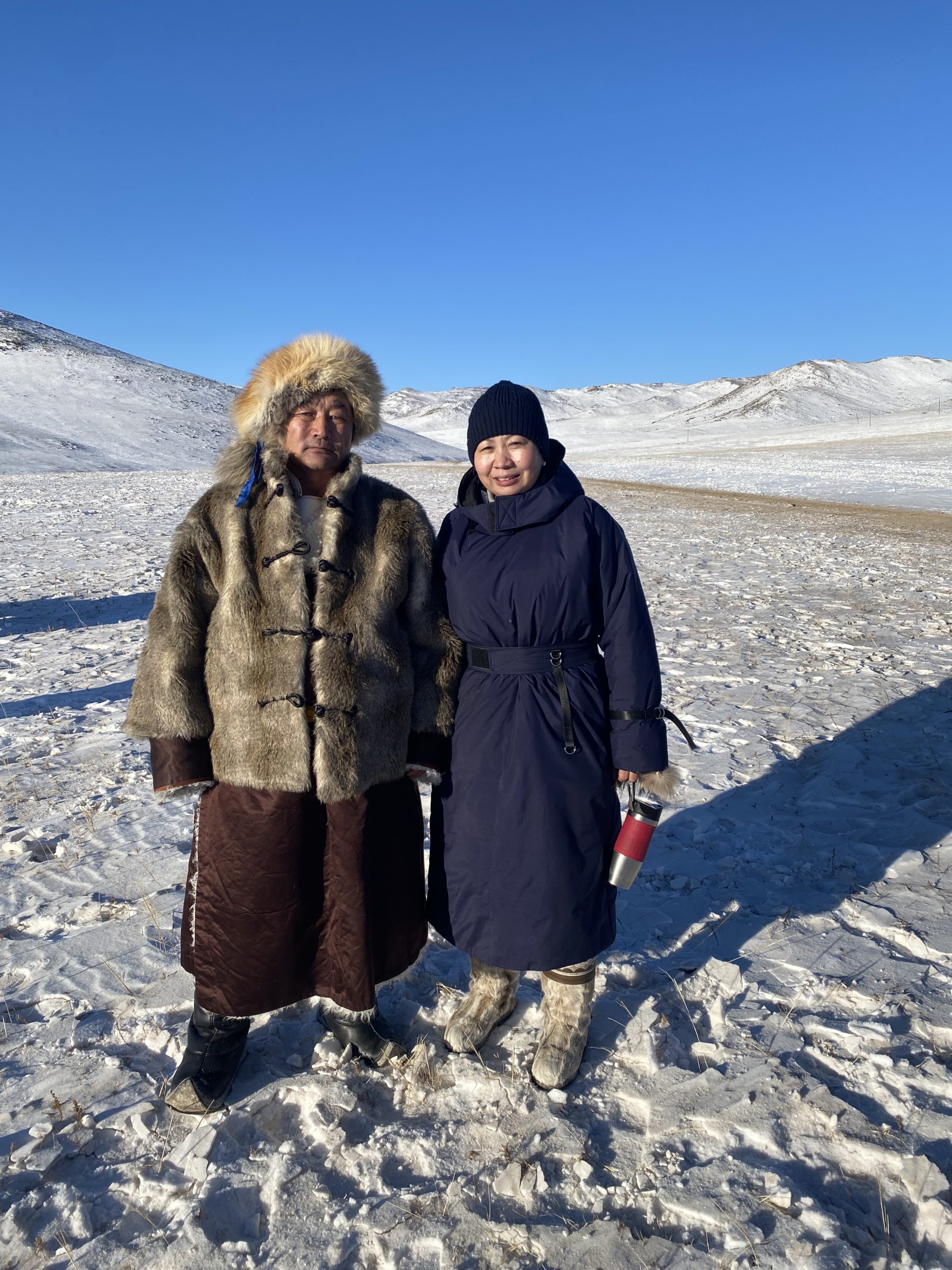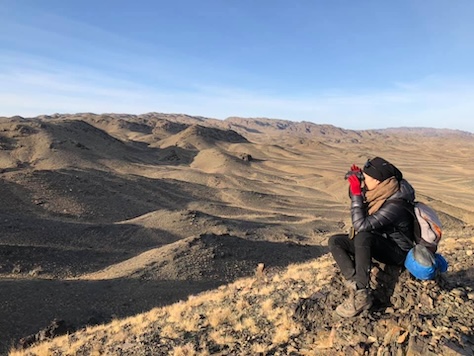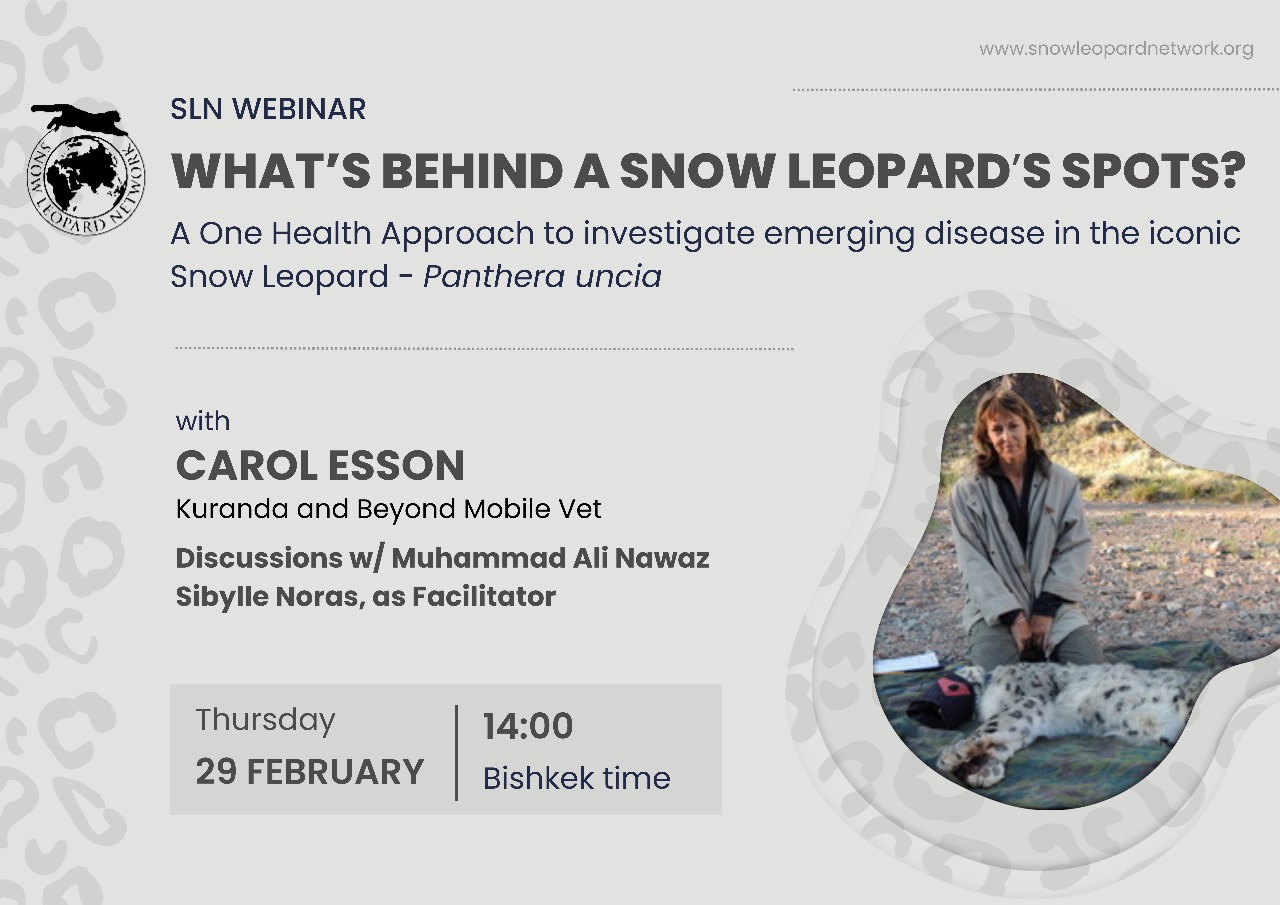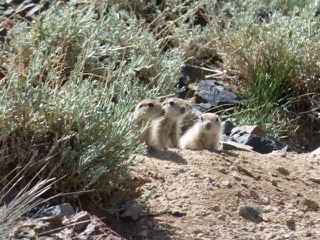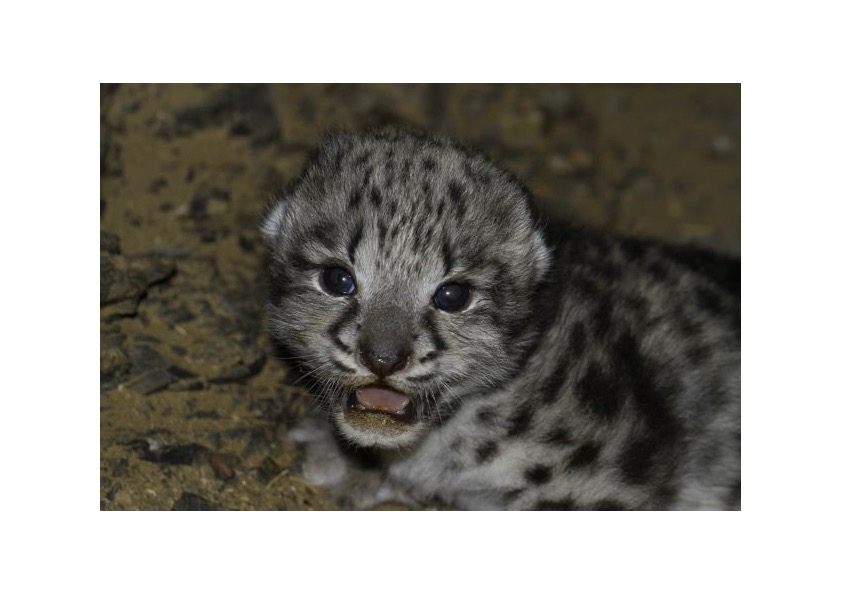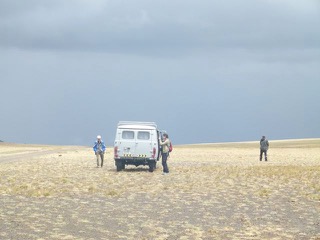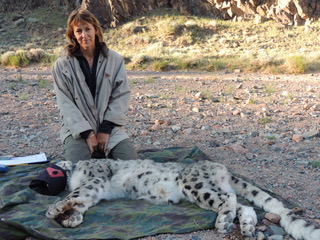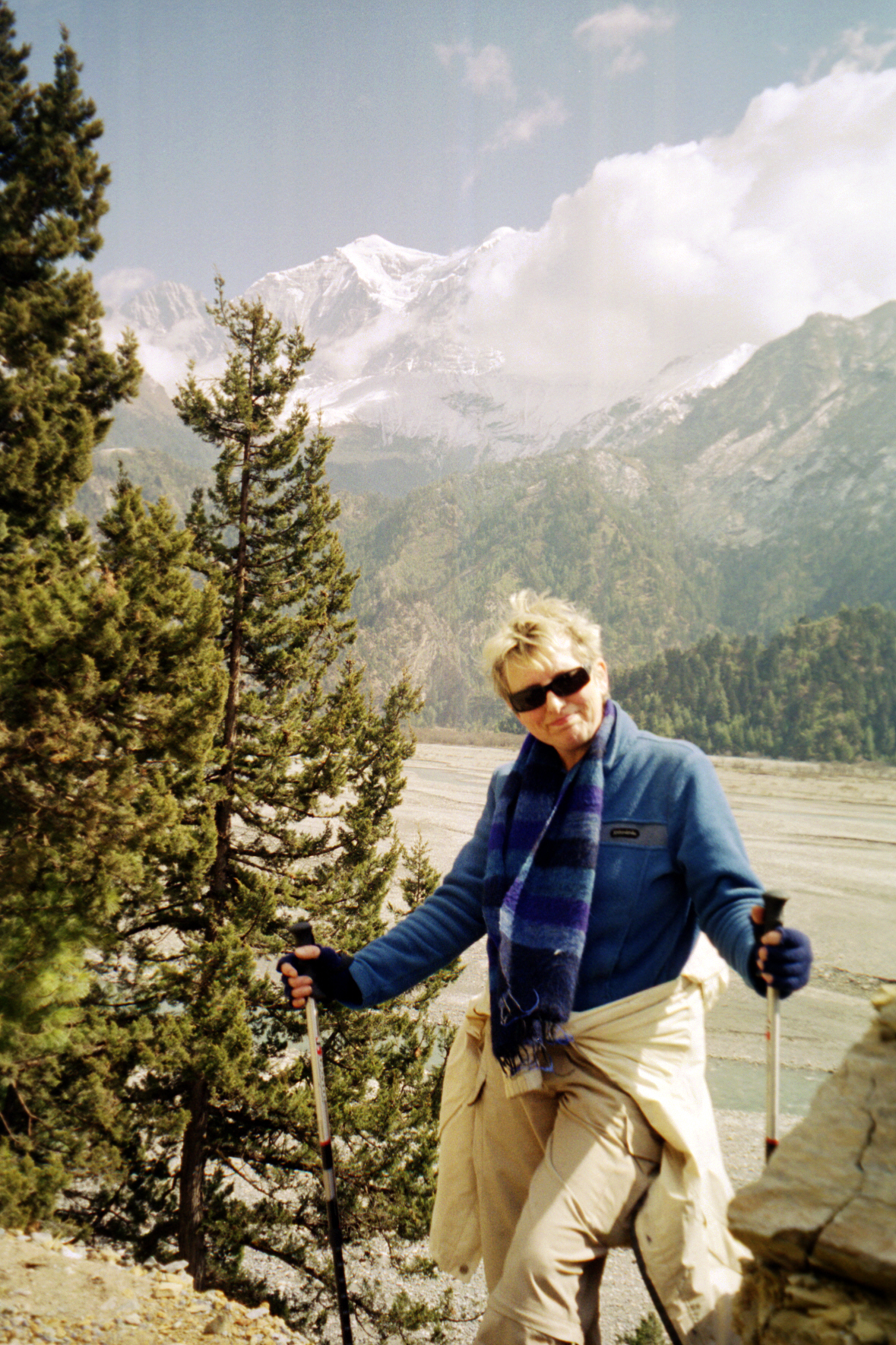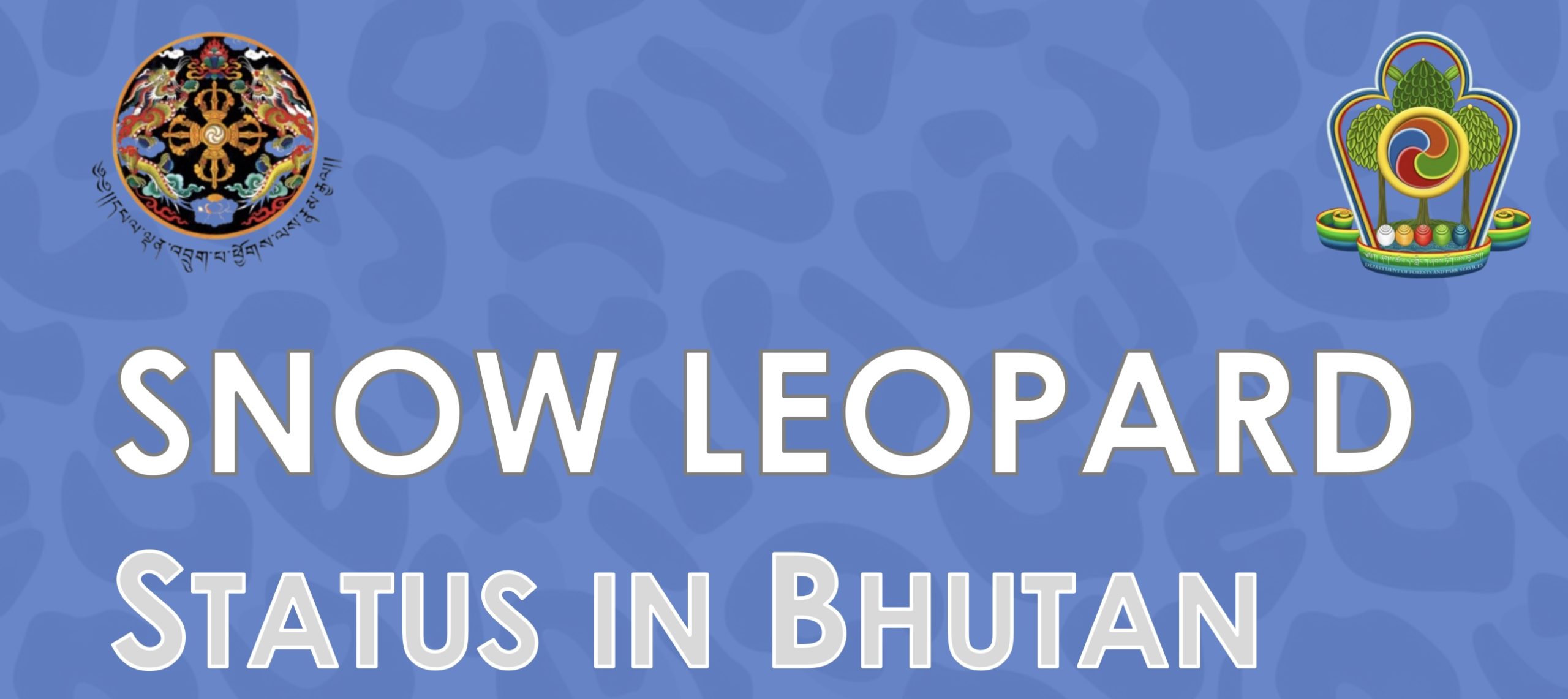Please find details below of a new article added to our Bibliography:
Title: A One Health approach to investigating the health and prevalence of zoonotic pathogens in snow leopards, sympatric wildlife, domestic animals and humans in the South Gobi Desert in Mongolia
Author: Esson, C. L.
Abstract: The endangered Snow leopard (Panthera uncia) inhabits the high mountain regions through central Asia and is subjected to numerous threats including poaching for traditional Chinese medicine, retribution killing for preying on domestic stock, and habitat fragmentation. However the occurrence and impact of disease on snow leopard populations is unknown. As emerging infectious diseases of wildlife can be an insidious yet important cause of population decline due to mortality or reproductive failure, my study aimed initially to gain knowledge of pathogens circulating among wild and domestic hosts in this region. I used a broad One Health approach to survey a range of species to collect data on disease occurrence that would be useful in improving human and livestock health, as well as snow leopard conservation.
This study is set in the Tost Mountains of the South Gobi Desert of Mongolia and was prompted due to the unexplained deaths of four snow leopards detected within a short timeframe during an ecological study by members of the Snow Leopard Trust. However, investigating disease occurrence in remote, rare and endangered species is a challenge due to inaccessibility of sites, difficulty of capture, and processing samples without facilities.
A One Health approach uses multidisciplinary expertise such as ecological, medical and veterinary, to understand host, pathogen and environmental disease factors. This approach is especially useful for diseases that transfer between people, domestic animals and wildlife. As snow leopards are a rare and elusive species, my surveys were aimed at assessing pathogens circulating in snow leopards as well as in sympatric wild and domestic animals. I collected samples from the following hosts: snow leopards – the target species; rodents which are ubiquitous over the study area and are a suitable sentinel species; ibex which are a native ungulate and natural prey species of the snow leopard; domestic goats which are also a prey species of the snow leopard; free-ranging domestic dogs which interact with the goats. The local indigenous people interact with all these species including snow leopards, mostly via retribution killing. Water samples were also collected from waterholes and wells, w
hich are communal meeting places as drinking sources for all species, hence enabling pathogen exchange. Samples collected included blood samples, faecal samples or rectal swabs and ectoparasites if present. These samples were transported to laboratories in Sweden and Belgium where I conducted diagnostic assays for zoonotic pathogens that are present in other regions of Mongolia and impact the health of humans and animals. I used enzyme- linked immune assay (ELISA), polymerase chain reaction (PCR) and next-generation sequencing (NGS) for pathogens including Coxiella burnetii, Toxoplasma gondii, Leptospira spp., Brucella spp., Yersinia pestis and tick borne encephalitis virus. Serovars of Leptospira were elucidated using microscopic agglutination tests (MAT). The dog blood samples were also tested for canine distemper virus. Ticks, faeces, rectal swabs and water were tested for bacteria, Echinococcus, Giardia and Cryptosporidium using PCR and NGS.
Health records for humans and animals in the region were not available so, in addition to testing animal samples, I used questionnaire surveys to obtain information on perceptions of the herders concerning health of their families, their domestic animals and wildlife. Questions also assessed preventative health management and treatments used.
Over three field trips I caught and sampled twenty snow leopards, 177 rodents (8 species), 41 dogs and 270 goats. I also sampled 11 waterholes/wells, and preserved 18 ticks, hundreds of fleas and collected faecal samples from ibex.
Most animals that were sampled and examined clinically appeared in good health, but the serosurvey revealed a moderate to high level of exposure to serious pathogens: C. burnetii, T. gondii and Leptospira spp. There were no published reports of human infections with these pathogens in the study area, which is likely due to a lack of testing.
Snow leopards had the highest prevalence of C. burnetii antibodies (25%), followed by rodents (16%), dogs (10%) and goats (9.5%). Goats had the highest prevalence of T. gondii antibodies (90%), dogs (66%), snow leopards (20%) and rodents (16%). Rodents had the highest prevalence of Leptospira spp. (34%), followed by snow leopards (20%) and dogs (5%). Serovars interrogans Australis was identified in the rodents and snow leopards and interrogans Ictohaemorrhagiae was identified in the rodents and dogs. Other serovars were also present from the results of the ELISA but did not match those listed in the MAT panel, so could not be identified. Goats were not tested for infection with leptospirosis. Brucella was not identified in the goats even though it occurs at high prevalence in stock in the rest of Mongolia where it is a large health and economic concern. In rodents, the zoonotic Puumala and Seoul hantavirus were identified for the first time in Mongolia. Analysis of data from rodents
showed the pathogens detected (C. burnetii, T.gondii, Hanta virus and Leptospira spp.) differed significantly in prevalence, with a strong year effect driven mainly by Leptospira, which increased in prevalence across the three year study period. Toxoplasma gondii differed slightly in prevalence among rodent species. There was no significant difference in prevalence of interaction of pathogens among years or rodent species.
Poor health was detected in goats with 10 out of the 14 goats tested via haematology and biochemistry being anaemic with haematocrits less than 20%. Haematology and biochemistry values for the other animal species appeared normal. I established haematology and biochemistry reference tables for two rodent species – red-cheeked ground squirrels and jerboas.
Water samples were negative for serious pathogens. Fleas were negative for Yersinia pestis. However, ticks were positive for several genera of potential zoonoses, including Anaplasma, Bacillus, Coxiella, Clostridia, Francisella, Rickettsia, Staphylococcus, Streptococcus and Yersinia. Faecal samples were also positive for genera of potentially zoonotic bacteria including those listed above plus Bacteroides, Bordetella, Campylobacter and Enterococcus.
Results from the two questionnaire surveys revealed the main reported illness in people were colds and flu. However, the local doctor also reported hepatitis as common. She also said that the local people contracted brucellosis whereas I did not identify this pathogen in their livestock. The herders thought their main loss of stock was from predation, with wolves identified as the main predator and snow leopards as the second. Other causes of stock loss perceived as important were adverse climatic conditions such as drought or severe winters while infectious disease was not a concern. Results from these surveys also highlighted gaps in health care for humans and livestock, especially around vaccination and parasite treatments.
In summary, I found that snow leopards and other wild and domestic animals within the study area tested positive for previous exposure to several important zoonotic pathogens. These pathogens were likely circulating among species via contamination of pasture and via predation and have potential to cause illness and reproductive loss. However, I detected no adverse effects on the health of the animals due to infection with these pathogens, and observed no related mortality or illness during my field trips. Hence the deaths of the four snow leopards that were the impetus for my study have not been explained, and monitoring and surveillance of this population should continue.
My findings on wildlife and domestic animal pathogens have relative importance to improving productivity of livestock and the health of the nomadic herders. I recommend improving the health of goats through vaccination and anti-parasite programmes, which will improve their fecundity and survival and thus increase herder income. These programmes will also have flow-on effects to improve the health of the native ungulates that share the grazing areas by decreasing the risk of pathogen transfer between them and also to the snow leopards that prey on them. Demonstrating the importance of herd health may also help mitigate herder wildlife conflict as increased productivity could decrease the perceived importance of predation on herd numbers.
Coxiella burnetii and Leptospires spp are a likely cause of illness in people, despite the lack of reported diagnoses. As rodents had a moderate prevalence of all pathogens tested and inhabit the gers of the local people, it is important to raise awareness of the risk of pathogen transfer to people via rodent excrement contaminating stored food and eating utensils. Risk of human exposure to pathogens during goat slaughter can also be reduced via improved hygiene practices.
By identifying pathogens with broad host ranges in a variety of species in this remote mountainous region, my study provides the basis for understanding health risks to wildlife, domestic animals and humans. Consideration of likely transmission routes for pathogens between species can inform current recommendations to improve health, productivity and hence conservation, of the endangered snow leopard – The Ghost of the Mountain.


